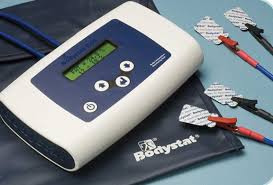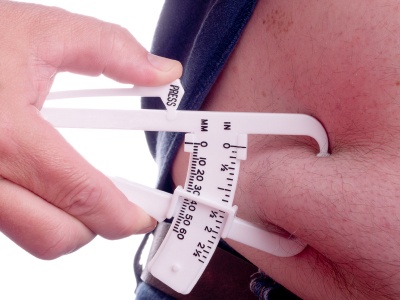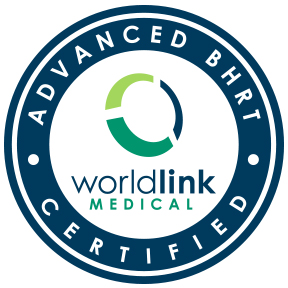GET a Grip on your “Body Composition.” Body Composition is simply the amount of lean body mass and body fat that makes up total body weight (weight alone is not an adequate measure of your health). The lean body mass (LBM) includes the bones, muscles, water, connective and organ tissues. Body fat includes both essential and non-essential fat stores. Essential fat includes organs and tissues, such as nerves, lungs, liver, and mammary glands. The non-essential fat is primarily within adipose tissue.
Measuring your “Body Composition” helps us determine your risk for disease, your hydration status, your ideal body weight, and the amount of protein you need to consume to be healthy. It is desired to measure your body composition (and your metabolism) at your initial visit and at subsequent visits to assure you are not losing muscle mass. It is inappropriate for anyone to be placed on a restrictive diet and not monitor where the weight loss is coming from. This valuable tool, along with the MedGem® metabolic analysis are indispensable for accurate assessment and for meeting long-term goals during your healing journey.
Why Measure Body Composition?
Total weight on its own is of little importance and far too many people base their diet regimen on what they see on the bathroom scale. Irrespective of total weight, if lean and fat proportions are within established recommended limits than one has a significantly reduced risk of suffering from many health problems associated with being “over fat,” including:
- Diabetes
- High Blood Pressure
- High Cholesterol
- Coronary Artery Disease
- Respiratory Disease
- Kidney Disorders
- Cancer, and more
Equally serious, however, is the problem of having too little body fat since adipose tissue is vital for normal organ function. The dramatic increase in anorexia nervosa, bulimia, and “fear of obesity” demands an awareness of correct body composition.
It is clear then that the total body weight does not provide an accurate reflection of an individual’s state of health. A weight lifter may be classified as seriously overweight according to height/weight tables or the BMI, but yet have perfect body composition. Conversely, a person may have “normal” weight according to standard tables and yet be over-fat.
If you are embarking on a weight loss program, it is essential that you are aware of your “Body Composition.”
Often diets will result in loss of mostly lean body mass and water. By tracking your body fat, you can closely monitor what body composition changes are actually happening. Just knowing how may pounds you have lost is insufficient. The goal of any weight control program needs to involve adjusting a person’s exercise and dietary habits to reach the ideal percentage of body fat.
How Do We measure Body Composition?
Simply measuring body composition on a scale, or with calipers (pictured above) or hand devices is not reliable. Instead, we measure “Body Composition” using the Bioelectrical Impedance Analysis (BIA) Method.

The physical principle behind the BIA technique is that the body’s lean compartment, comprising approximately 60-75% electrolytic water, conducts electricity far better than the body’s fat compartment which is very low in body water content (between 5-10%). These two compartments have, therefore, very different impedance (or resistance) values to a high-frequency electrical signal. The signal impedance measurement reflects the degree of resistance to the flow of current in the body, water being a good conductor, but fat a bad conductor.
So, this technique is essentially an index of total body water, from which fat-free mass is estimated.
What is the procedure for obtaining a BIA?
You will remove any metallic objects that you may be wearing. You will remove your shoes and socks only. While in a lying position, self adhesive disposable electrodes are placed on your right hand and two on your right foot. Clips are attached to the electrodes, a battery-generated signal is passed through the body and an impedance value is produced.
This value, together with other details of age, height, weight, and gender are used to analyze the data and within three seconds produces a comprehensive personal body composition statistical analysis.
What are BIA testing conditions?
These testing conditions are designed to avoid increases or decreases in body water content that could result in a less accurate measurement:
- Avoid vigorous exercise, preferably 8-12 hours prior to the test
- Avoid alcohol, preferably within 24-48 hours of the test
- Avoid eating or drinking, at least two hours prior to the test
How Safe & Accurate is BIA?
Safety: The BIA method is risk-free. It sends an extremely weak electrical current (50 kHz) that is painless, safe and non- detectable. Only those who have a pacemaker or other internal device should not undergo BIA.
Accuracy: As long as the BIA Testing Conditions are maintained, BIA is accurate and highly reproducible. This is unlike the skinfold caliper (pictured above) where the skill of the technician, the accuracy of the calipers, the placement of the caliper during measurement and the individual’s fat patterns can cause errors of greater than 5%. In addition, body fat scales in which people stand on, or devices where the person grasps the handles of the device, are NOT accurate and could lead to inappropriate treatment.
In clients who have varying body water contents, BIA may not be an accurate body fat measurement. However, BIA is still a good method for monitoring CHANGES in body fat in these individuals. Clients who may have varying body water contents include: the elderly, children, body-builders, athletes, individuals with illness, individuals experiencing swelling, individuals who have osteoporosis, women who are pregnant, or individuals undergoing dialysis.
You will also want to find out YOUR NUMBER!









